|
|

|
Porsche, and the Porsche crest are registered trademarks of Dr. Ing. h.c. F. Porsche AG.
This site is not affiliated with Porsche in any way. Its only purpose is to provide an online forum for car enthusiasts. All other trademarks are property of their respective owners. |
|
|
| Prospectfarms |
 Jun 30 2011, 06:34 AM Jun 30 2011, 06:34 AM
Post
#1
|
|
Member   Group: Members Posts: 495 Joined: 7-March 11 From: Louisville, KY Member No.: 12,801 Region Association: Upper MidWest |
My AAR was dead. Not only that but it shorted out and ruinined my ignition harness. The hot lead coming from underneath the unit lost its insulation. The valve and the heating element were both inoperable. Here's how I fixed it.
The AAR is a can holding a spring. The spring is really a bi-metal strip curled to resemble a watch spring. It serves as a thermostat. A valve on top of the can is regulated by that spring. The valve admits "auxillary air" to the manifold. I opened the can by first cutting slots across the top of the "lip." I used a pneumatic cut-off saw. You could use anything that cuts metal. As you can see I was not very careful and it turned out alright. Opening the can separates it from the valve and exposes the spring. Tow screws are attached to the spring. The one on the side is the adjustment. It is self-explanatory given that it controls where the opening of the valve is in relation to the spring. The other screw retains the spring to the valve shaft. It provides a handy place to put a small screw driver so you can turn the valve back and forth. I loaded the valve with penetrating oil. I had to remove the spring to really work it until the valve turned smoothly. The spring comes on and off easily. There is a tiny cotter pin holding the shaft in place, but you don't have to remove it. 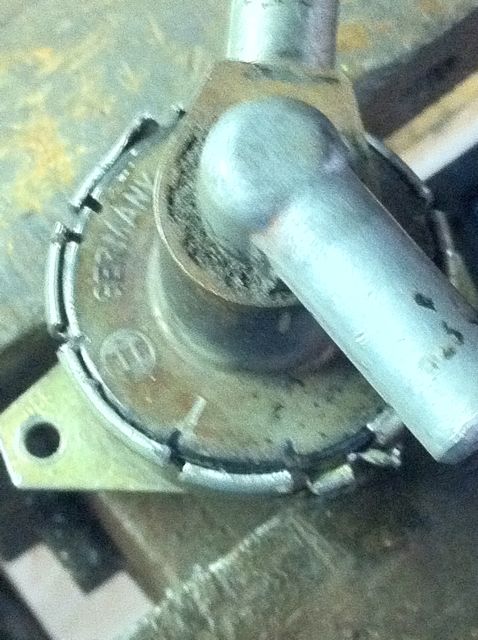 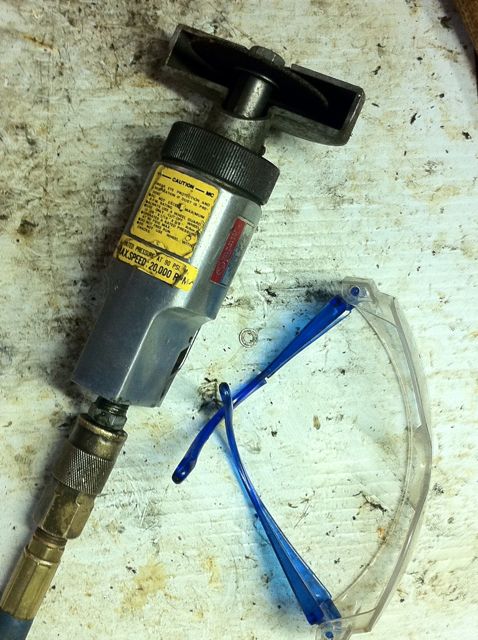 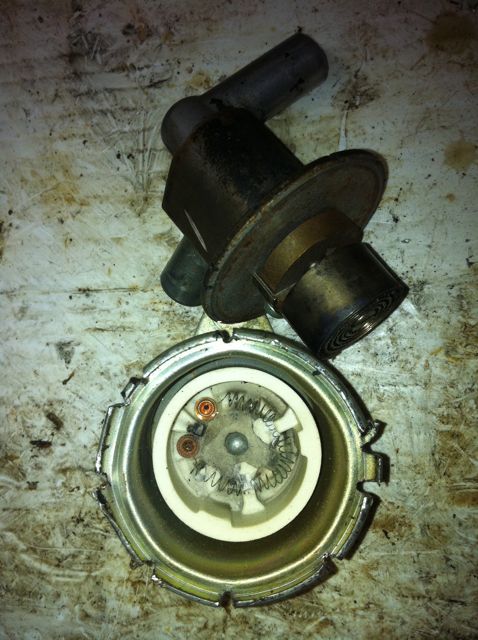 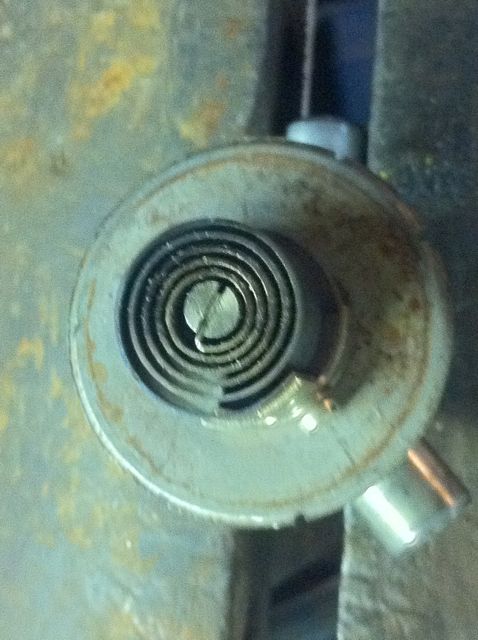 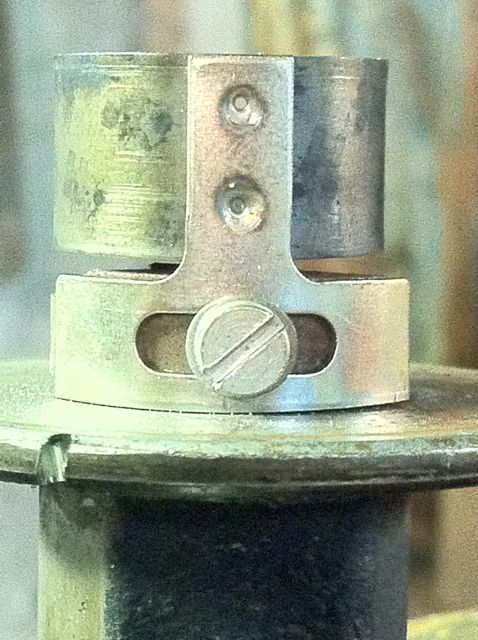 Excuse the duplicate photo. Next... Attached image(s) 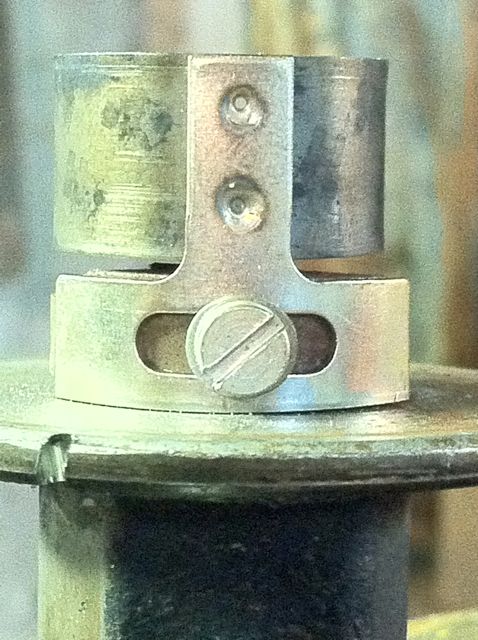
|
  |
Replies
| Dave_Darling |
 Jun 30 2011, 04:04 PM Jun 30 2011, 04:04 PM
Post
#2
|
|
914 Idiot           Group: Members Posts: 14,991 Joined: 9-January 03 From: Silicon Valley / Kailua-Kona Member No.: 121 Region Association: Northern California 
|
Hey, cool! I don't remember the adjustment screw from when I had mine apart--but other than that, yours looks exactly the way I remember.
I actually used a flat-head screwdriver as a chisel, and hammered it into the lip that folds over the top of the can. Fold it back, and the lid comes off just like you show here. I took my inspiration from the odometer repair process; un-crimp the outer thing to remove the inner part. I don't know how critical the resistance is. If yours closes in 10 minutes, it's probably good enough. The ones that I have measured (three different 2.0 ones) were all right around 13 ohms; when you have ~14 volts on your system and then a 13 ohm resistor to ground, you will dissipate just about 1 watt of power, which is why you want at least 1A rated resistors for that. With 120 ohms, you'll dissipate less power and not need resistors rated as high. (Probably on the order of 100 mA, or 0.1 Amps?) --DD |
Posts in this topic
 Prospectfarms AAR restoration Jun 30 2011, 06:34 AM
Prospectfarms AAR restoration Jun 30 2011, 06:34 AM
 Prospectfarms II
Next I addressed the heating element in a cera... Jun 30 2011, 06:42 AM
Prospectfarms II
Next I addressed the heating element in a cera... Jun 30 2011, 06:42 AM
 Prospectfarms III
I soldered another beefier resistor to insula... Jun 30 2011, 06:47 AM
Prospectfarms III
I soldered another beefier resistor to insula... Jun 30 2011, 06:47 AM
 jim_hoyland Great write up ! :) Do the resisters determi... Jun 30 2011, 07:03 AM
jim_hoyland Great write up ! :) Do the resisters determi... Jun 30 2011, 07:03 AM

 Prospectfarms
Great write up ! :) Do the resisters determ... Jun 30 2011, 07:19 AM
Prospectfarms
Great write up ! :) Do the resisters determ... Jun 30 2011, 07:19 AM

 Prospectfarms
Great write up ! :) Do the resisters determ... Jun 30 2011, 09:55 AM
Prospectfarms
Great write up ! :) Do the resisters determ... Jun 30 2011, 09:55 AM

 Prospectfarms Unintentional duplication of post. Don't know ... Jun 30 2011, 09:56 AM
Prospectfarms Unintentional duplication of post. Don't know ... Jun 30 2011, 09:56 AM
 Prospectfarms
Hey, cool! I don't remember the adjustme... Jun 30 2011, 05:02 PM
Prospectfarms
Hey, cool! I don't remember the adjustme... Jun 30 2011, 05:02 PM  |
1 User(s) are reading this topic (1 Guests and 0 Anonymous Users)
0 Members:

|
Lo-Fi Version | Time is now: 16th June 2024 - 06:54 AM |
Invision Power Board
v9.1.4 © 2024 IPS, Inc.








